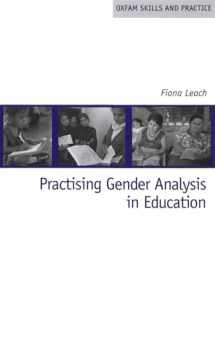
Practising Gender Analysis in Education (International Development)
Book details
Summary
Description
* Provides accessible tools for carrying out gender-sensitive analyses of current situations.
* Includes frameworks for analysing systems, institutions, and policies, in a simple but powerful way.
* These tools will enable readers to think though problems clearly, and to develop constructive alternatives.
"This Guide to Practising Gender Analysis in Education" is a companion volume to the Guide to Gender-Analysis Frameworks by March et al, published by Oxfam in 1999. The first book is a guide to using gender-analysis frameworks in development work. This companion will apply four frameworks: the Harvard framework, the Women’s Empowerment Approach, the Gender Analysis Matrix and the Social Relations Approach, to the analysis of a variety of educational contexts, including national education policies and projects, schools, colleges, ministries, teaching and learning materials, and school and teacher training curricula.
Aimed at policymakers and planners, academics, researchers and students, development agency staff and of the practitioners, each chapter presents a tool for gender analysis, and discusses its methodology and its uses, as a means of supporting gender mainstreaming. The book provides practical examples of how the tool can be used, and highlights their strengths and disadvantages.


We would LOVE it if you could help us and other readers by reviewing the book
Book review



